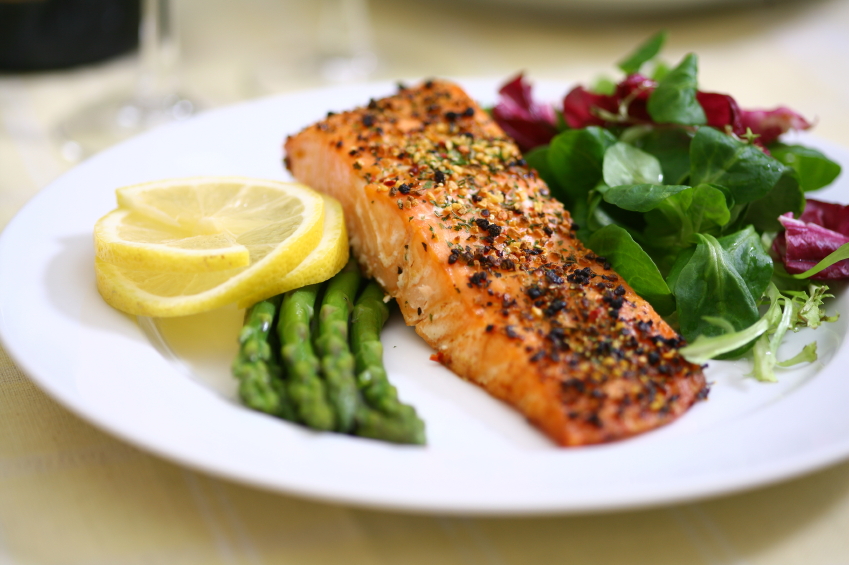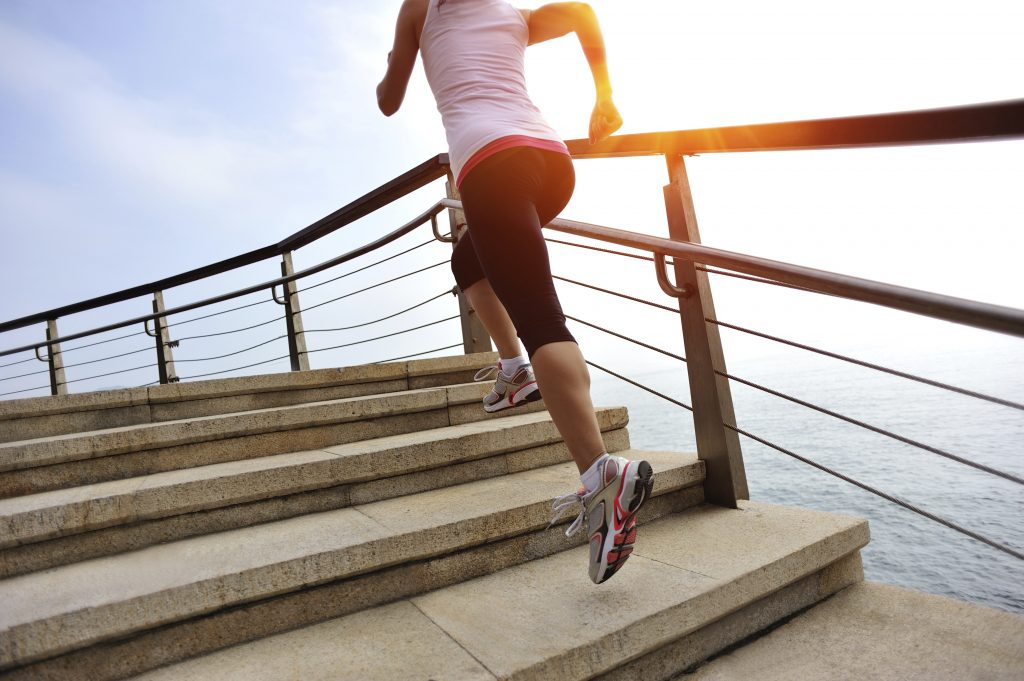Osteoporosis affects millions of people across the world. This condition, a bone disease, occurs when the body either loses bone or does not make enough. This causes bones to become brittle and more prone to fractures. Every year, more than 8.9 million bone fractures occur due to osteoporosis. The condition is most common in people over the age of 50. One in two women over the age of 50 will experience a broken bone due to osteoporosis, while one in four men over 50 will experience an osteoporotic fracture. In addition to fractures, osteoporosis can lead to reduced height and degraded posture.
While age is a factor, other conditions and medications can put you at a higher risk for osteoporosis. Some risk factors include celiac disease, lupus, rheumatoid arthritis, diabetes and Parkinson’s disease. Some medications that may increase the risk of osteoporosis include the blood thinner heparin and antacids containing aluminum, a common over-the-counter treatment for heartburn.
Not all of these risk factors are within your control, but there are still steps you can take to help prevent osteoporosis.
Incorporate More Calcium Into Your Diet
As children, we are encouraged to drink lots of milk to keep our bones strong. Most of the calcium in our bodies is located in our bones and our teeth, but our body cannot make this mineral on its own. We need to consume it through our diet, even as adults. If we do not have enough calcium in our diet, we can suffer bone loss. As people grow older, it is important they include more calcium in their diet. The recommended calcium intake for men ages 19 to 70 is 1,000 milligrams a day. After age 70, the recommended amount goes up to 1,200 milligrams per day. For women ages 19 to 50 years old the recommended amount is also 1,000 daily milligrams. After age 50, the recommended amount goes up to 1,200 milligrams per day.
Here are some excellent sources of calcium:
- Dairy: Dairy is often the first food people think of when trying to improve their calcium intake. Foods like yogurt, milk and cheese are all rich in calcium. One eight-ounce serving of plain, low-fat yogurt contains 415 milligrams of calcium. One cup of skim milk has 306 milligrams of calcium. One ounce of American cheese has 162 milligrams of calcium.
- Vegetables: There are a ton of non-dairy ways to prevent osteoporosis. Instead of reaching for the milk, head to produce aisle at the grocery store. Green and leafy vegetables are a great source of calcium. For example, one cup of boiled collard greens has 357 milligrams of calcium. Green leafy vegetables also contain a lot of vitamin K, which is also important for maintaining bone health. Other options in this group of foods include kale and broccoli.
- Fruits: Fruit is another good way to introduce more calcium, as well as other essential nutrients into your diet. For example, one cup of orange contains 72 milligrams of calcium. Other calcium-rich fruits to try include apricots, kiwis, pineapple and berries.
- Fish: Fish is another option for increasing your dietary calcium intake, particularly canned fish. For example, 60 grams of canned sardines have 240 milligrams of calcium.
- Soy-based foods: If you are lactose intolerant, you can still try other types of milk to get your required calcium. One cup of soy milk has 72 milligrams of calcium. Tofu is another type of soy-based food. A 120-gram serving of tofu has about 125 milligrams of calcium.
If you are not confident you include enough calcium in your regular diet, you can always consider taking daily calcium supplements.
Decrease the Amount of Caffeine and Salt You Consume
Caffeine and sugar can have a negative impact on bone mineral density. Caffeinated beverages are incredibly popular. Coffee is a nearly ubiquitous morning drink, and many people drink it throughout the day. Soda, which contains high levels of both caffeine and sugar, is also a popular drink, usually served in large cups and bottles. Caffeine may be a good way to boost your energy temporarily, but it can increase the risk of osteoporosis. One study found an association between drinking soda and decreased bone mineral density in women. Caffeine can actually cause bone thinning by decreasing the amount of calcium in your bones. Ingesting 100 milligrams of caffeine can translate to six milligrams of lost calcium. If you regularly consume caffeinated beverages, the calcium loss can easily add up. In addition to caffeine, some sodas contain phosphoric acid. This type of acid can increase the amount of calcium your body excretes through urine. This can mean your body is losing the calcium it needs to maintain strong bones.
Caffeine can be tough to give up. If you can’t give up your cup of morning coffee entirely, try to cut back or swap to decaf. You can even opt for beverages with lower levels of caffeine, like tea. One eight-ounce cup of brewed coffee has 95 to 165 milligrams of caffeine while a decaf cup of the same size has two to five milligrams of caffeine. An eight-ounce cup of brewed black tea has 25 to 48 milligrams of caffeine, while a cup of decaf black tea has two to five milligrams of caffeine. Some teas, often herbal blends, are naturally caffeine-free. When it comes to soda, you can drink caffeine-free flavors or switch to sparkling water to avoid the sugar and caffeine of soda.
A diet high in salt can also contribute to bone loss. Salt contains sodium, which is essential for our health, but the typical American diet contains more sodium than necessary. Most Americans ingest at least 4,000 milligrams of sodium per day while they only need about 2,300 milligrams. Salt, like phosphoric acid, causes the body to excrete calcium through urine. Think about skipping the extra salt on your meal, and read the nutrition information on processed foods. A large amount of salt we consume is contained in things like baked goods, fast food and processed meat.
Make Sure You Are Getting Enough Vitamin D
Like calcium, vitamin D is a vital nutrient for bone health. It actually helps your body absorb calcium. Mayo Clinic recommends adults get at least 600 international units (IU) of vitamin D per day, but other recommendations can be as high as 1,000 to 2,000 daily IUs. You can talk with your doctor about testing the vitamin D levels to determine if you are getting enough. Here are some foods that can help introduce more vitamin D into your diet:
- Seafood: Many different types of seafood are rich in vitamin D. For example, a three-and-a-half ounce serving of salmon has 361 to 685 IUs of vitamin D, which can nearly cover your entire daily requirement. Other seafood high in vitamin D include herring, sardines and canned tuna.
- Eggs: A single egg yolk has 41 IUs of vitamin D
- Dairy: In addition to being a source of calcium, many dairy products in the United States are fortified with vitamin D. An eight-ounce glass of milk has approximately 100 IUs of vitamin D. Cheese and yogurt can also be good sources of vitamin D.
If your vitamin D levels are low, you can talk with your doctor about taking a supplement.
Think About Your Digestive Health
It may not seem like your digestive health has a lot to do with your bone health, but the two are actually closely connected. Probiotics are often called “good bacteria.” They are the bacteria that live in your gut. These bacteria can be naturally occuring the foods we eat, particularly fermented foods like yogurt and sauerkraut. Probiotics can also be taken as a dietary supplement. A new study examined probiotic and bone loss use in older women. One group of older women, at an average age of 76 years old, took a probiotic supplement while the second group of older women was given a placebo. After a year, the researchers examined bone loss in the women’s lower legs. They found that the group of women who took the probiotic had only half the bone loss compared to women who took the placebo. The results show promise that probiotics have a positive effect on retaining bone mass.
Commit to Getting Enough Sleep
Sleep affects nearly every aspect of our health. A lack of sleep and frequent sleep disturbances are associated with an increased risk for osteoporosis. Adults need approximately seven to eight hours of sleep per night, but as we age, it can be tougher to get to sleep and stay asleep. Sleep issues, like insomnia and sleep apnea, can actually increase the risk of osteoporosis. For example, one study found insomnia is linked to a 52 percent increase in osteoporosis risk.
So, getting enough sleep is one of the best natural ways to prevent osteoporosis, but how do you make sure you’re getting the necessary amount? Here are a few ways to help you get the amount of sleep you need:
- Limit screen time before bed. We have access to screens all day, every day. We have our phones, tablets, computers and televisions within easy reach. Watching a movie or scrolling through social media right before bed may seem like a good way to unwind, but it can actually make it harder to fall asleep and disrupt your sleep.
- Keep a regular sleep schedule. Good sleep habits can help you get those precious hours of rest every night. Try to stick to a regular bedtime and waking time. Create a bedtime routine that works for you. Maybe it is a relaxing bath or quiet music.
- Cut back on caffeine. Earlier we discussed how caffeine could affect your body’s calcium levels. Caffeine can also keep you up at night. If you are having trouble sleeping, reduce your caffeine intake, limit it to only the morning hours or cut it out of your diet entirely.
Stay Active
Exercise is vital to maintaining strong bones and preventing osteoporosis. Even if you do already have osteoporosis, the right type of exercise can help you maintain your bone mass. Weight-bearing, resistance, flexibility and balance exercises can all play an important role in osteoporosis prevention. Here are examples of all four exercise types:
- Weight-bearing exercises: Weight-bearing exercises can either be high-impact or low-impact. You can choose between the two based on your health and fitness levels. High-impact weight-bearing exercises will put more stress on your body. Dancing, hiking, running, tennis and climbing stairs are all examples of high-impact weight-bearing exercises. If you want to opt for low-impact weight-bearing exercises, you can translate many of these options to the gym. Try walking on a treadmill or using a stair-step machine. Try to incorporate at least 30 minutes of exercise into your routine five days a week. If you can do more, that is great.
- Resistance exercises: Resistance exercises involve using your muscles and bones to work against an external weight. This type of physical activity can help improve bone density and muscle strength. Resistance exercises can be as simple as lifting free weights. You can also do resistance training with the help of exercise bands. If you are worried about putting too much stress on your body, water aerobics is a good option. The water provides resistance for your bones and muscles, but it also serves as a cushion.
- Flexibility exercises: Maintaining flexible joints helps protect your body from injury. Basic stretches for your arms, legs and spine can easily be done at home. If you prefer to exercise in a group, you can try a yoga class. Yoga offers exercise at a wide variety of intensities and skill levels. Some classes are designed to be slower paced and geared entirely toward improving flexibility.
- Balance exercises: Exercising to strengthen your muscles and bones also makes it less likely you will suffer a fall. If you are at risk of developing osteoporosis, a fall could easily result in a broken bone. Try to incorporate balancing exercises into your routine. This could be as simple as practicing standing on one foot. You could also work up to some of the more challenging balancing postures used in yoga and tai chi.
Your healthcare provider can also perform bone density and fitness tests to help determine what type of exercise is best for you. Exercise can help keep your bones strong and you on your feet.
Let the Spine INA Help With Your Back Pain
If you are over 50 years old and experiencing pain following a fall, it is possible you have an osteoporotic fracture. The Spine INA specializes in spine and neck pain. We can evaluate the cause of your pain and discuss treatment options. If you need surgery, we proudly offer the least invasive surgical procedures so you can get back to your favorite activities with a short recovery time. Contact us to learn how you can get back on your feet.
This content was medically reviewed by Baher Yanni, M.D, on February 14th, 2019.
Resources:
https://www.bonati.com/blog/remember-calcium-strong-bones/
https://www.ora.organic/blogs/news/10-natural-ways-to-prevent-osteoporosis
https://blog.mercy.com/non-dairy-ways-prevent-osteoporosis-build-bone-health/
https://www.iofbonehealth.org/facts-statistics
https://www.nof.org/patients/what-is-osteoporosis/
https://medlineplus.gov/druginfo/meds/a601013.html
https://www.mayoclinic.org/diseases-conditions/osteoporosis/symptoms-causes/syc-20351968
https://spineina.com/why-choose-Spine INA/
https://www.nof.org/patients/treatment/calciumvitamin-d/
https://www.hsph.harvard.edu/nutritionsource/what-should-you-eat/calcium-and-milk/
https://www.medicinenet.com/what_food_can_i_eat_to_prevent_osteoporosis/ask.htm
https://www.iofbonehealth.org/news/discover-bone-benefits-soy
https://ajcn.nutrition.org/content/84/4/936.full…hlavne
https://www.betterbones.com/bone-health-basics/new-research-on-sleep-and-bones/
https://www.webmd.com/osteoporosis/features/diet-dangers#1
https://www.webmd.com/diet/caffeine-myths-and-facts#1
https://www.bbc.com/future/story/20150911-is-sparkling-water-really-bad-for-you
https://www.webmd.com/osteoporosis/features/exercise-for-osteoporosis#1
https://www.mayoclinic.org/diseases-conditions/osteoporosis/in-depth/osteoporosis/art-20044989
https://www.iofbonehealth.org/exercise-recommendations
https://saveourbones.com/why-sleep-is-crucial-to-your-bone-health/
https://www.sciencedaily.com/releases/2017/04/170402111317.htm
https://www.webmd.com/sleep-disorders/features/adult-sleep-needs-and-habits#1
https://www.vitamindcouncil.org/health-conditions/vitamin-d-and-osteoporosis/
https://newsnetwork.mayoclinic.org/discussion/mayo-clinic-q-and-a-how-much-vitamin-d-do-i-need/
https://www.healthline.com/nutrition/9-foods-high-in-vitamin-d
https://www.webmd.com/food-recipes/guide/calcium-vitamin-d-foods
https://ods.od.nih.gov/factsheets/VitaminD-HealthProfessional/
https://www.health.com/health/gallery/0,,20504538,00.html
https://www.webmd.com/digestive-disorders/what-are-probiotics
https://www.sciencedaily.com/releases/2018/06/180621101329.htm













Leave a Reply